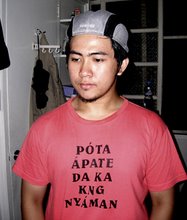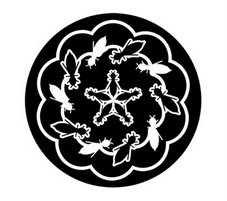BACOLOR, PAMPANGA – Estofado, a tedious painting and gilding process on wooden sculptures, has come of age in Pampanga.
Sculptor-painter Wilfredo Tadeo Layug – born, reared and still based in the old woodcarving village of Betis in Guagua – has applied the technique locally, the high point of his apprenticeship under Jose Antonio Navarro Arteaga in Seville, Spain, since 2003.
Layug mounted icons, retablo (carved centerpiece of a church), altar pieces, relief sculptures and lecterns in his newest showroom. It is hailed as the first for estofado-styled ecclesiastical art in Pampanga.National Artist for Sculpture Napoleon Abueva not only opened the showroom. He lingered to enjoy Layug's work.
"He's a master not only in sculpting but in painting. He's done these in a very realistic way, very artistic. He's number one in the country in the arena of ecclesiastical art. He really has the eye for coloring, especially in the handling of gold and silver," Abueva told the Inquirer.
Estofado, according to Layug, requires a lot of patience and meticulousness because the wood is "covered by layers of paint that starts from putting a primer up to the gilding method."
Antigong tekniko (Antique technique) is his other term for this completely new trend in Betis.
From afar, it gives the impression that an icon is wearing real clothes. The luxurious details of gold are actually the outcome of the careful gilding method.
Abueva said in applying the new style, Layug has departed from Betis' traditional wood sculpting techniques.
Only a few furniture companies, foremost of them the Betis Crafts, still use an old gilding method but not in the complicated way of the estofado, it was learned.
In the advent of commercial production, most household-based furniture makers have been carving pieces without putting finishing touches on them or by ending with the sanding process.
"What [Layug] learned from Seville is really the height of ecclesiastical art. It is really something to have here around. I hope our seminarians will come here and revive their interest in good art in our churches," Abueva said.
San Fernando (Pampanga) Archbishop Paciano Aniceto took Layug's recent endeavor as "a sign that despite the negative situation that our country is in, ecclesiastical art in Pampanga is going to be more visually magnificent."
The passion to explore, learn and improve the craft brought Layug to Joey Panlilio, museum curator of the De La Salle University-Dasmariñas, who, in turn, introduced the Betis artist to the Instituto de Cervantes for support and contacts with Spanish artists like Arteaga.









1 comment:
Good brief and this mail helped me alot in my college assignement. Thank you seeking your information.
Post a Comment